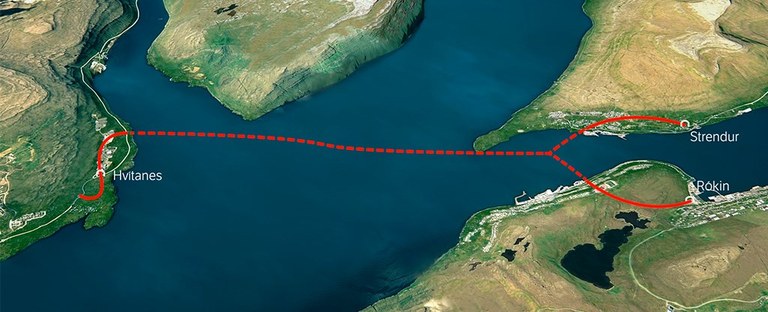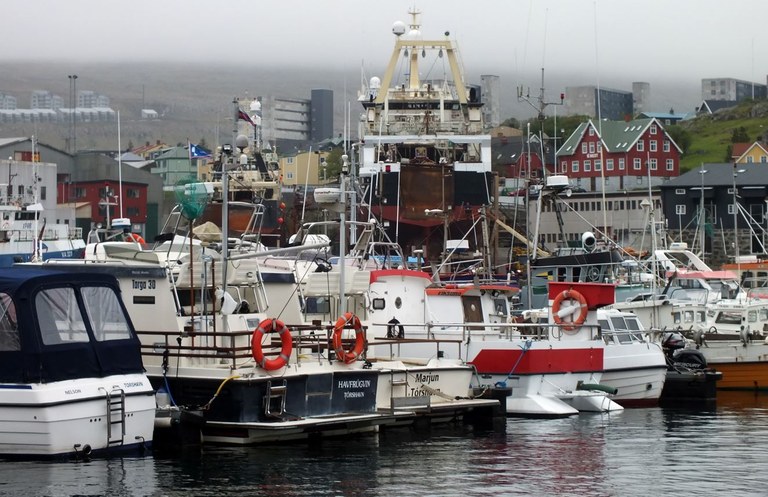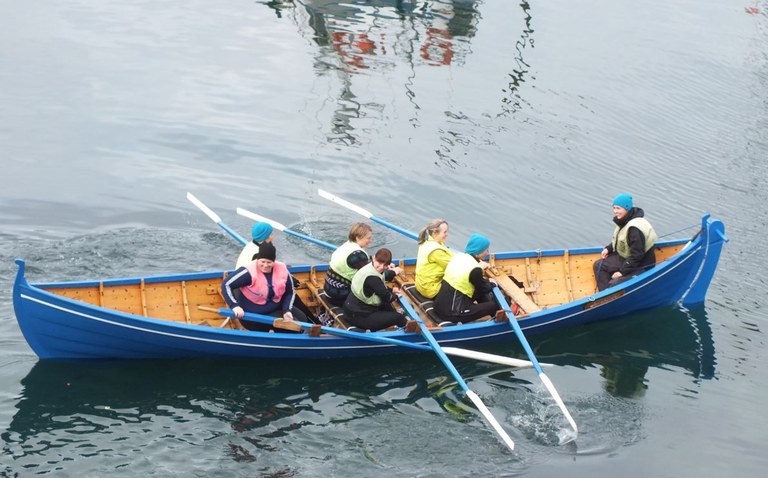Faroe Islands heading for dream target – 50,000 citizens
For several months – in fact for many years – the Faroese have been waiting for the magical number 50,000. And it is about to arrive! The latest official update says 49,820, the real figure is even closer to 50,000 and it is now only a matter of weeks.
We are talking about the Faroe Island’s population figure. They experienced a population explosion in the economic boom years of the 70s and 80s, but never reached the magical number – 50,000 – before an economic crisis hit in 1992.
Nearly 10 years ago the Faroese again got close to that figure, but then the latest financial crisis put a temporary halt to the growth.

But this is it. In late February or early March 2017 Faroese number 50,000 will be born, or registered as an immigrant. That is a promise from Hagstova, Statistics Faroe Islands. It’s a “check” for the Faroese authorities against a goal which has been top of the political wish list for many years.
Moving in the right direction
Henrik Old sits in his government minister’s office in one of the tiny historical buildings in Tinganes, Tórshavn, considering the issue. He is the Minister of Transport, Infrastructure and Labour, representing the Social Democratic Party.
“We are moving in the right direction, there is no doubt about it. We have managed to tempt highly skilled Faroese to return home after getting and education abroad, and that was one of the most important aims we set ourselves back then.”
Henrik Old refers to the government’s 2013 action plan for immigration and population growth.

Henrik Old, Social Democrat Minister Minister of Transport, Infrastructure and Labour, here from the Nordic Council. Photo: Magnus Fröderberg/Norden.org
The problem at that time was that even though the population was slowly growing, the number of people of childbearing age was falling.
The alarm was sounded, resulting in amongst other things the plan of action with its 37 recommendations.
One of the problems with the Faroese demographics is the gender imbalance. There are nearly 2,000 more men than women in the Faroe Islands. Figures have levelled out somewhat in later years, however. In 2007 the number of women were up by 2%, taking into account all age groups, and today that number is 1.7%.
Tunnels linking the labour market
Henrik Old is also responsible for transport and infrastructure in the Faroe Islands. Right now his focus is on a subsea tunnel linking Tórshavn to Skálafjord on the island of Eysturoy. The Norwegian tunnelling machines which will do the job have been put in place to drill the more than 11 kilometres which will cut driving times between Klaksvik and Tórshavn with half an hour.
“The tunnels are linking the Faroese labour market, allowing 90 percent of the population to get to work without being dependent on ferries. With the tunnels and improved transport links to the outside world, the Faroe Islands have taken some giant steps into the future, and it is also one of the reasons why the Faroese and others are now showing a greater interest in coming to live in the Faroe Islands,” thinks Henrik Old.

The tunnel between Streymoy and Skálafjord
There are currently two subsea tunnels linking the Faroe Islands. The one between Streymoy and Vágar is 4.9 kilometres long and opened in 2002. The tunnel between Eysturoy and Klaksvík on Borðoy is 6.2 kilometers long and opened in 2006. The tunnel between Streymoy and Skálafjord on Eysturoy will be 11.2 kilometers long. Work has started and is expected to be completed in 2019 – 20. The tunnel between Streymoy og Sandoy will be 9.5 kilometers long. Work is expected to start in 2018 and be finished in 2023.
An adaptable population
The Faroese have experienced several economic crisis over the years. They have always proved to be very adaptable when it comes to the labour market. In times of low yielding fish stocks in the seas surrounding the islands, Faroese men travelled abroad to fish.
 Tòrshavn harbour
Tòrshavn harbour
Working away from home has always been a natural thing for a large part of the labour force.
According to the latest census from 11.11.2011, 461 people worked outside of the Faroe Islands (mainly in the Nordic countries) – 1.2 percent of the total labour force.
Henrik Old has made it his goal to make use of this adaptability in the future.
“When you live in a small society, it is necessary to be able to adapt to changing needs in the labour marked. That is why I want us to introduce an adult education programme which would allow us to constantly improve or change the skills of the employable population to reflect the labour market’s needs at any one time,” says Henrik Old.
Change is according to Henrik Old not just a challenge facing the existing and to some extent non-skilled part of the labour force. It is also a challenge for young people who move back home after finishing their higher education.

It is important that women with higher educations also choose to stay in the Faroe Islands
“I want the Faroese society and labour market to be ready to receive all of those who come to us and want to be part of helping the Faroe Islands get ready to face the challenges of the future.
“This of course involves both Faroese and others who wish to come to us. This can be refugees, even though the refugee policy is part of Danish jurisdiction, which means we do not have much influence,” says Henrik Old.
2.8 percent of the Faroese population have other citizenships than Danish. 169 come from Iceland, 149 from the Philippines, 108 from Thailand and 105 from Norway. 36 have Swedish citizenship and 16 are Finnish. 87 different nationalities are registered in the Faroe Islands.
In recent years the Faroe Islands have introduced more targeted measures in order to integrate foreigners into Faroese society – first and foremost by introducing them to the language and the culture. Klaksvík municipality was the first to introduce a proper integration policy in 2015 with an integration committee and integration coordinator.
Pension system on hold
The age imbalance has been in focus for many years in the Faroe Islands. A pension reform has therefore been a political aim for a long time. Yet no concrete plan has been presented for politicians to consider yet. The main issue has been the pensionable age.
“We might well have to start considering changing the pensionable age at some stage. It is obvious that we are facing an ageing population and that people to a much larger degree will have to help contribute to the GDP also after the age of 67.
“I am not too keen on changing the pensionable age, however. After a long life at sea, I know many people who are physically exhausted when they reach the pensionable age of 67, and they are not capable of carrying on in the labour market.
“On the other hand, I also see how people are ‘expelled’ from the good society only because at a certain age they no longer fit into the system. This is unfair. We should find a flexible solution which gives older people the opportunity to contribute to society if they so want – working part time, for instance. In that respect our systems have been far too rigid,” thinks Henrik Old.
In the past decade the number of people over 67 (the pensionable age) in the Faroe Islands has increased from 5,750 in 2007 to 7,235 in 2016. In 2007 11.9 percent of the population was over 67. Today they make up 14.7 percent.
In 2016 11 Faroese turned 100, bringing the total of centenarians to 15. That is a record.
- Rowing towards the future
-
Rowing, or kappróður is a Faroese sport that dates back to the 1930s. The boats used for the competition have a much longer history, however. Used for hundreds of years as the chief means of transport between eighteen islands, they have a distinctive Faroese design. The shape is noticeably that of miniature Viking longboats, which navigated the North Atlantic a thousand years ago, and which transported the very first migrants from Norway to the Faroe Islands. The experience of kappróður, then, is a captivating blend of modern athleticism and ancient Nordic shipbuilding.
Source: faroeislands.fo
 Follow us on Facebook
Follow us on Facebook
